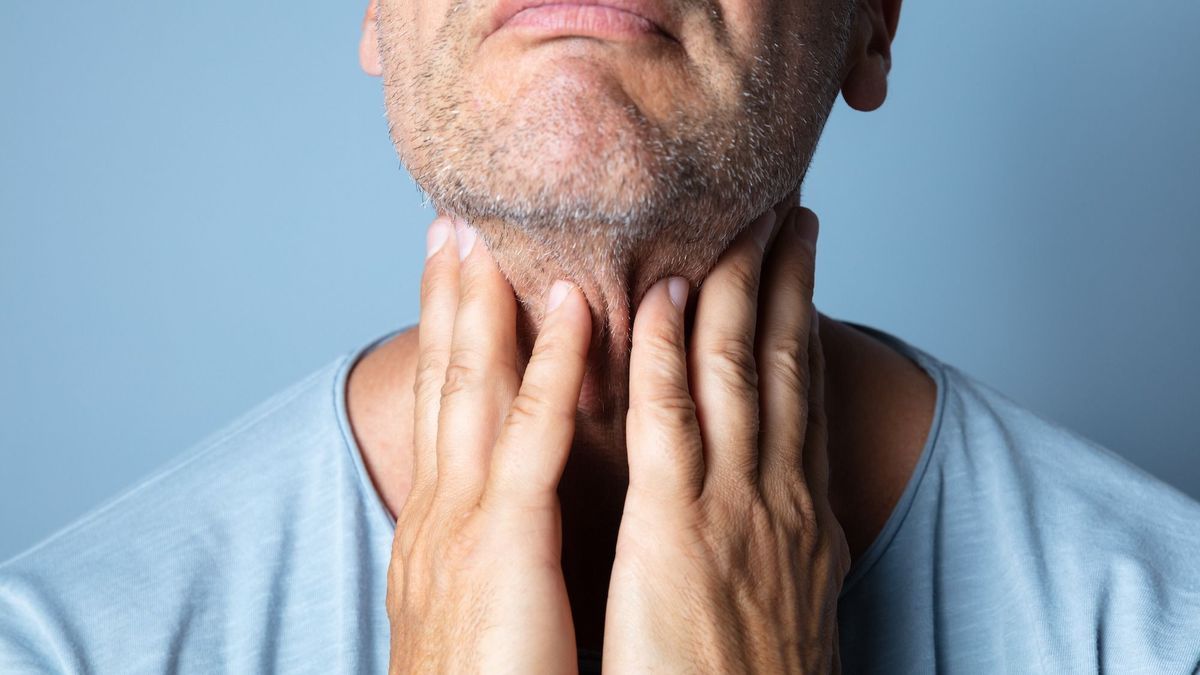
Published on
Updated
Located in the oral cavity and at the top of the neck, the salivary glands are used to produce saliva. What diseases can affect their proper functioning? Explanations from Dr Thomas Bellocq, otolaryngologist surgeon, at Saint-Joseph hospital in Paris.
When we talk about the salivary glands, we must distinguish the main salivary glands from the accessory salivary glands.
Where are the salivary glands located?
The main salivary glands include the parotid glands which are located behind the cheeks, in front of the ears and the submandibular (or submandibular) glands, located under the mandible. There are also smaller sublingual glands located under the tongue.
The accessory salivary glands are distributed throughout the oral cavity, at the level of the palate, and in the pharynx at the back of the throat. There are around a thousand of them.
Function of the salivary glands
The salivary glands are used to produce saliva. Depending on the type of gland involved, the composition of the saliva will not be completely identical. “At the level of the submandibular glands, the saliva is more watery, while it is richer in enzymes at the level of the parotid glands.illustrates the specialist.
Saliva serves to lubricate food and begin the digestion process, but it also plays an important role in speech, by lubricating the oral cavity. Saliva also has an antibacterial role. “The antibodies present in saliva will serve to regulate the oral microbiota, and therefore play an important role in oral health.explains Dr. Thomas Bellocq.
Chronic pathologies and acute pathologies
The main salivary glands can be affected by chronic or acute pathologies.
Chronic pathologies of the salivary glands
One of the most common chronic diseases is hyposialorrhea, when saliva production decreases. The feeling of dry mouth may be age-related, with saliva production decreasing over time because the salivary glands function less well. Other factors promote less saliva production. “Dehydration increases with age because the feeling of thirst is less present. However, drinking enough water daily improves saliva production. continues the specialist.
Hyposialorrhea can also be caused by taking medications, notably psychotropic drugs, such as antidepressants for example, or associated with a chronic illness such as diabetes, or even more specifically Gougerot-Sjögren’s disease, an autoimmune pathology which results in inflammation of the salivary glands. Hyposialorrhea can also be caused by treatments used in ENT cancers (cervical radiotherapy or iratherapy in thyroid cancer, for example), which will reduce saliva production.
THE sialoses result in a painless increase in the volume of the salivary glands and may or may not be linked to a specific pathology.
Acute pathologies of the salivary glands
Acute pathologies of the salivary glands include infections, whether viral or bacterial. “Viral infections include mumps which causes diffuse swelling of the parotid glands. calls back the doctor. Other viruses such as the flu, for example, can also cause similar swelling.
The parotiditis designates an inflammation of the parotid gland which is treated with antibiotics when it is of bacterial origin. It can be caused by dehydration. “When saliva no longer flows properly, we may observe swelling, redness, edema, pain in the salivary glands, or even fever. adds the doctor. Infection can also be secondary to blockage of a stone in the salivary duct, more often in a submandibular gland, which can become infected if saliva no longer flows.
More specific, the juvenile recurrent paroditis affects some children around the age of 4 or 5. It results in recurrent episodes of parotitis which result in swelling of one or both parotid glands. “In case of fever, it may require antibiotic treatment. This pathology generally disappears during adolescence”adds the specialist.
The salivary glands can be affected by calculations (lithiasis), relatively common pathologies which concern the submandibular glands more than the parotids. These stones cause sudden swelling of the gland during meals. “If it is small, the stone can spontaneously be expelled with saliva, but surgery is sometimes necessary. explains Dr. Thomas Bellocq.
Tumor pathologies
The salivary glands can also be the site of benign or malignant tumors. The most common concern tumors of the parotid glands, which are most often benign
On the other hand, tumors affecting the submandibular glands are rarer but more often malignant (only 20% of them are benign).
“To determine whether the tumor is benign or malignant, MRI remains the reference examination accompanied by a cytological puncture carried out under ultrasound guidance. Once the tumor is detected, treatment can be considered, most often surgery alone, sometimes followed by radiotherapy”, specifies the specialist. An excision of the neck lymph nodes draining the tumor can be carried out at the same time.
Finally, it happens that the salivary gland is the site of metastases linked to another tumor (skin cancer, for example). In these cases, removal of the gland is sometimes necessary.
Diagnosis and treatment of salivary gland pathologies
To establish the diagnosis, the doctor may use an ultrasound, an MRI or a CT scan depending on the case. If a tumor is suspected, a cytopuncture will be systematically carried out.
Over the past fifteen years, the arrival of sialendoscopy, a minimally invasive surgical technique carried out using a small camera, has made it possible to considerably improve the diagnoses and treatments of certain pathologies of the salivary glands, in avoiding in particular the need to remove the gland in the event of stones or stenosis (narrowing) of the salivary ducts. These techniques are, however, not available in all establishments.
